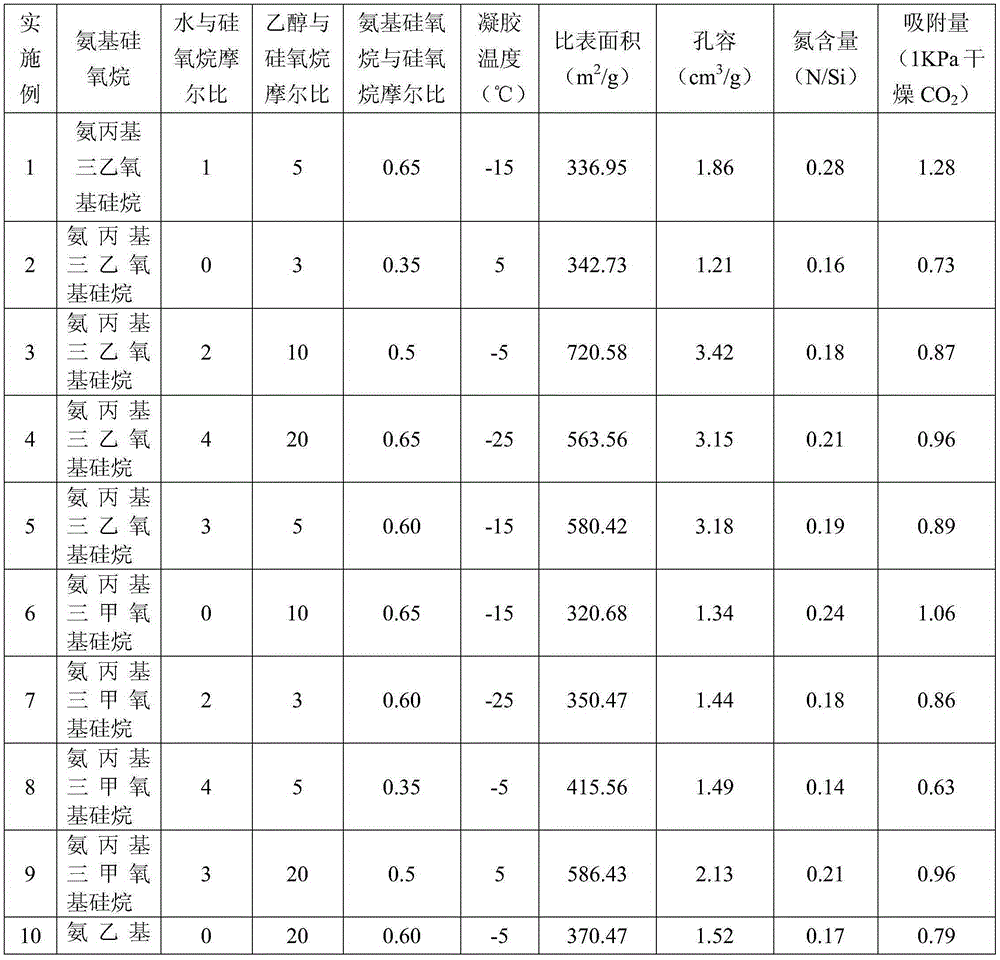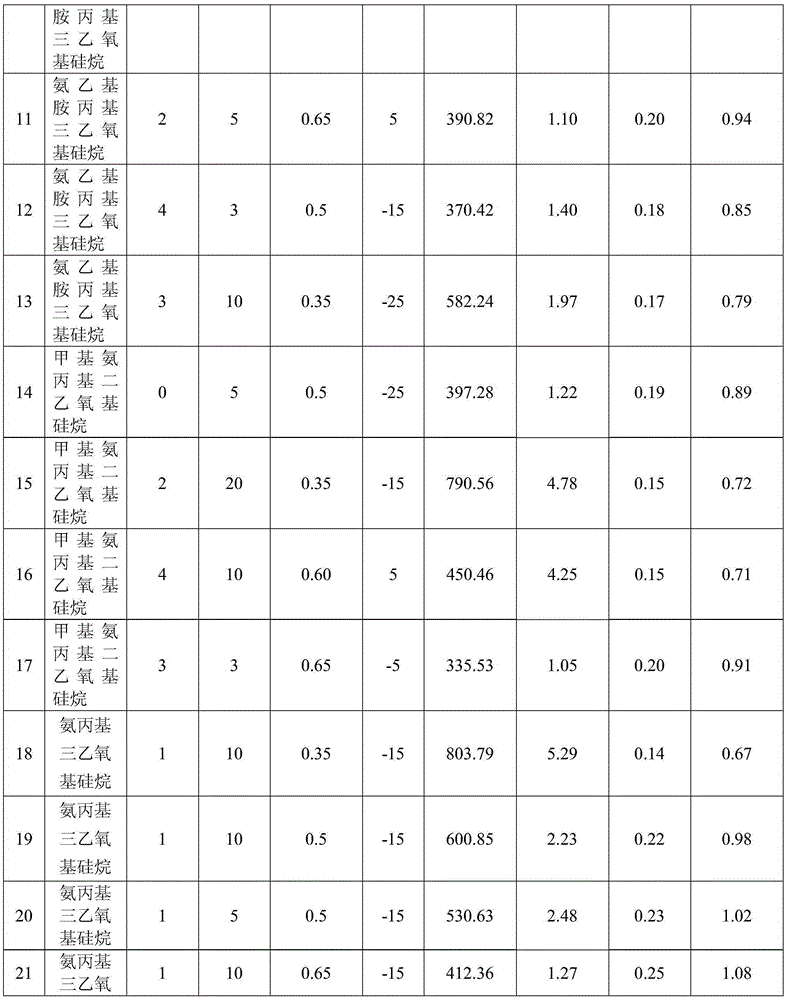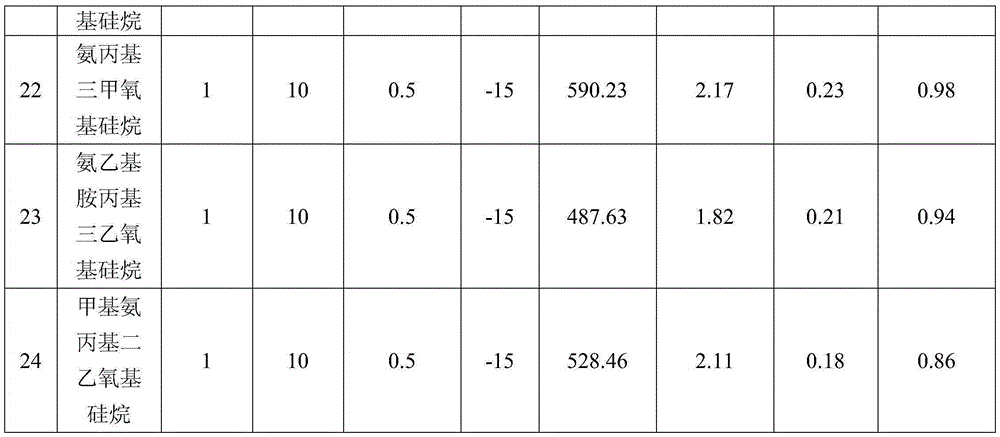A kind of preparation method of renewable low-concentration CO2 high-efficiency adsorption material
An adsorption material, low-concentration technology, applied in chemical instruments and methods, other chemical processes, etc., can solve the problems of cyclic adsorption/desorption adsorption capacity decrease, difficulty in ensuring material uniformity, long preparation period, etc., and achieve large adsorption capacity. , high nitrogen content, good uniformity
- Summary
- Abstract
- Description
- Claims
- Application Information
AI Technical Summary
Problems solved by technology
Method used
Image
Examples
Embodiment 1
[0034] (1) Mix ethyl orthosilicate, water, ethanol, and hydrochloric acid in a molar ratio of 1:1:5:0.0018, and after standing for 2 hours, add ammonia water in the amount of hydrochloric acid and other substances, and press ethyl orthosilicate and The molar ratio of water is 1:7 to make up water, adjust the temperature to -15°C to obtain silica sol; mix aminopropyltriethoxysilane (the amount of the substance is 0.65 times that of tetraethyl orthosilicate) and ethanol in a molar ratio of 1 : 5 mix evenly, and adjust the temperature to -15°C to obtain an aminosiloxane solution;
[0035] (2) Mix the silica sol and the aminosiloxane solution uniformly to obtain a mixed sol. Adjust the simethicone oil to -15°C, and under the condition of mechanical stirring at a stirring speed of 200r / min, add the mixed sol and simethicone oil into the simethicone oil at a volume ratio of 1:5 to obtain a mixed sol suspension liquid, keep the stirring speed until the mixed sol gels to obtain a sph...
Embodiment 2~24
[0046] The process parameters used in Examples 2 to 24 are shown in Table 1, because they affect the renewable low-concentration CO 2 The process parameters of the main performance of high-efficiency adsorption materials are mainly the molar ratio of water to siloxane in silica sol, the molar ratio of ethanol to siloxane, the molar ratio of aminosiloxane to siloxane, the type of aminosiloxane and 5 parameters such as gel temperature, and the type and amount of acid and alkaline catalysts and the type of siloxane mainly affect the gel time, but have little impact on its main performance, so the embodiments 2-24 mainly change these 5 parameters. Process parameters to further explain the present invention. Except the technological parameter written in the table, all the other technological parameters are identical with embodiment 1.
[0047] In Table 1, the process parameters of Examples 2 to 17 are set using the idea and method of orthogonal design (that is, the aminosiloxane i...
PUM
| Property | Measurement | Unit |
|---|---|---|
| adsorption capacity | aaaaa | aaaaa |
| adsorption capacity | aaaaa | aaaaa |
| specific surface area | aaaaa | aaaaa |
Abstract
Description
Claims
Application Information
 Login to View More
Login to View More - Generate Ideas
- Intellectual Property
- Life Sciences
- Materials
- Tech Scout
- Unparalleled Data Quality
- Higher Quality Content
- 60% Fewer Hallucinations
Browse by: Latest US Patents, China's latest patents, Technical Efficacy Thesaurus, Application Domain, Technology Topic, Popular Technical Reports.
© 2025 PatSnap. All rights reserved.Legal|Privacy policy|Modern Slavery Act Transparency Statement|Sitemap|About US| Contact US: help@patsnap.com



